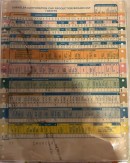Introduced for the 1968 model year, the second-gen Dodge Charger became significantly more popular than its predecessor. Dodge expected to move about 35,000 units, but the muscle car found no fewer than 96,100 homes. In 1969, deliveries remained strong at about 86,000 examples before dropping to about 49,800 units in 1970.
A highly desirable classic, the 1970 Charger is still a rather common muscle car. However, the R/T version is notably scarcer at fewer than 10,000 units made. Add a high-compression big-block V8 into the mix, and the numbers drop to three-digit figures. Specifically, only 684 Chargers were equipped with the six-barrel version of the 440-cubic-inch (7.2-liter) V8. For reference, Dodge sold 8,574 units with the four-barrel mill.
The 426-cubic-inch (7.0-liter) HEMI is by far the rarest of the bunch. With insurance rates for high-performance vehicles going through the roof in 1970, only 112 customers paid for the HEMI option. These rigs are hard to come by nowadays and the fact that one of them is under the hammer as we speak is a big deal.
Listed from Ray, Michigan, this HEMI Charger also sports a four-speed manual, making it one of only 56 fitted with this drivetrain combo. But wait, things get even rarer if we also factor in the Dana 3.54 rear end. That's because only 28 HEMI/4-speed rigs were equipped with one (the remaining 28 got the 4.10-ratio rear end).
The Mopar is otherwise unassuming, sporting a dark green exterior with a black vinyl top and an all-black interior. However, these features should reduce this Charger's production number even more. Only 9.4% of all R/T cars were painted Dark Green Metallic, so we could be looking at fewer than four units in this hue and drivetrain combo. In fact, it should be a one-of-one gem when all options are taken into account, but there's no way to prove it since Chrysler didn't keep detailed records.
Scarcity aside, this HEMI Charger looks the part inside and out. The seller says he purchased the vehicle in 2014 as a painted roller that had been in storage since the 1990s. He put the car back together with NOS parts while restoring everything but the seats, which look excellent for a car this old.
However, the Charger no longer relies on its original, numbers-matching 426 HEMI. Instead, it packs a "1973 Hemi block from the dealer that was built by Dave Dudek." There's no other info on the powerplant, but it looks legit and Dave Dudek is a known restored in the Detroit area. I guess we could say it's the next best thing to an all-original engine.
Speaking of which, the seller says he was able to locate the numbers-matching transmission and claims that the correct HEMI is still somewhere in the Detroit area. Locating it would be very difficult, but not impossible. Rare classics have been reunited with their matching drivetrains after several years in the past.
But even though it's not completely original, this Charger is likely worth six figures to most Mopar enthusiasts. As of this writing, bidding is at $101,102 with four days to go. The reserve hasn't been met and the "buy it now" price is $175,000. Is this sticker too high for a HEMI without the original powerplant? How much do you think it's worth?
The 426-cubic-inch (7.0-liter) HEMI is by far the rarest of the bunch. With insurance rates for high-performance vehicles going through the roof in 1970, only 112 customers paid for the HEMI option. These rigs are hard to come by nowadays and the fact that one of them is under the hammer as we speak is a big deal.
Listed from Ray, Michigan, this HEMI Charger also sports a four-speed manual, making it one of only 56 fitted with this drivetrain combo. But wait, things get even rarer if we also factor in the Dana 3.54 rear end. That's because only 28 HEMI/4-speed rigs were equipped with one (the remaining 28 got the 4.10-ratio rear end).
The Mopar is otherwise unassuming, sporting a dark green exterior with a black vinyl top and an all-black interior. However, these features should reduce this Charger's production number even more. Only 9.4% of all R/T cars were painted Dark Green Metallic, so we could be looking at fewer than four units in this hue and drivetrain combo. In fact, it should be a one-of-one gem when all options are taken into account, but there's no way to prove it since Chrysler didn't keep detailed records.
Scarcity aside, this HEMI Charger looks the part inside and out. The seller says he purchased the vehicle in 2014 as a painted roller that had been in storage since the 1990s. He put the car back together with NOS parts while restoring everything but the seats, which look excellent for a car this old.
However, the Charger no longer relies on its original, numbers-matching 426 HEMI. Instead, it packs a "1973 Hemi block from the dealer that was built by Dave Dudek." There's no other info on the powerplant, but it looks legit and Dave Dudek is a known restored in the Detroit area. I guess we could say it's the next best thing to an all-original engine.
Speaking of which, the seller says he was able to locate the numbers-matching transmission and claims that the correct HEMI is still somewhere in the Detroit area. Locating it would be very difficult, but not impossible. Rare classics have been reunited with their matching drivetrains after several years in the past.
But even though it's not completely original, this Charger is likely worth six figures to most Mopar enthusiasts. As of this writing, bidding is at $101,102 with four days to go. The reserve hasn't been met and the "buy it now" price is $175,000. Is this sticker too high for a HEMI without the original powerplant? How much do you think it's worth?












